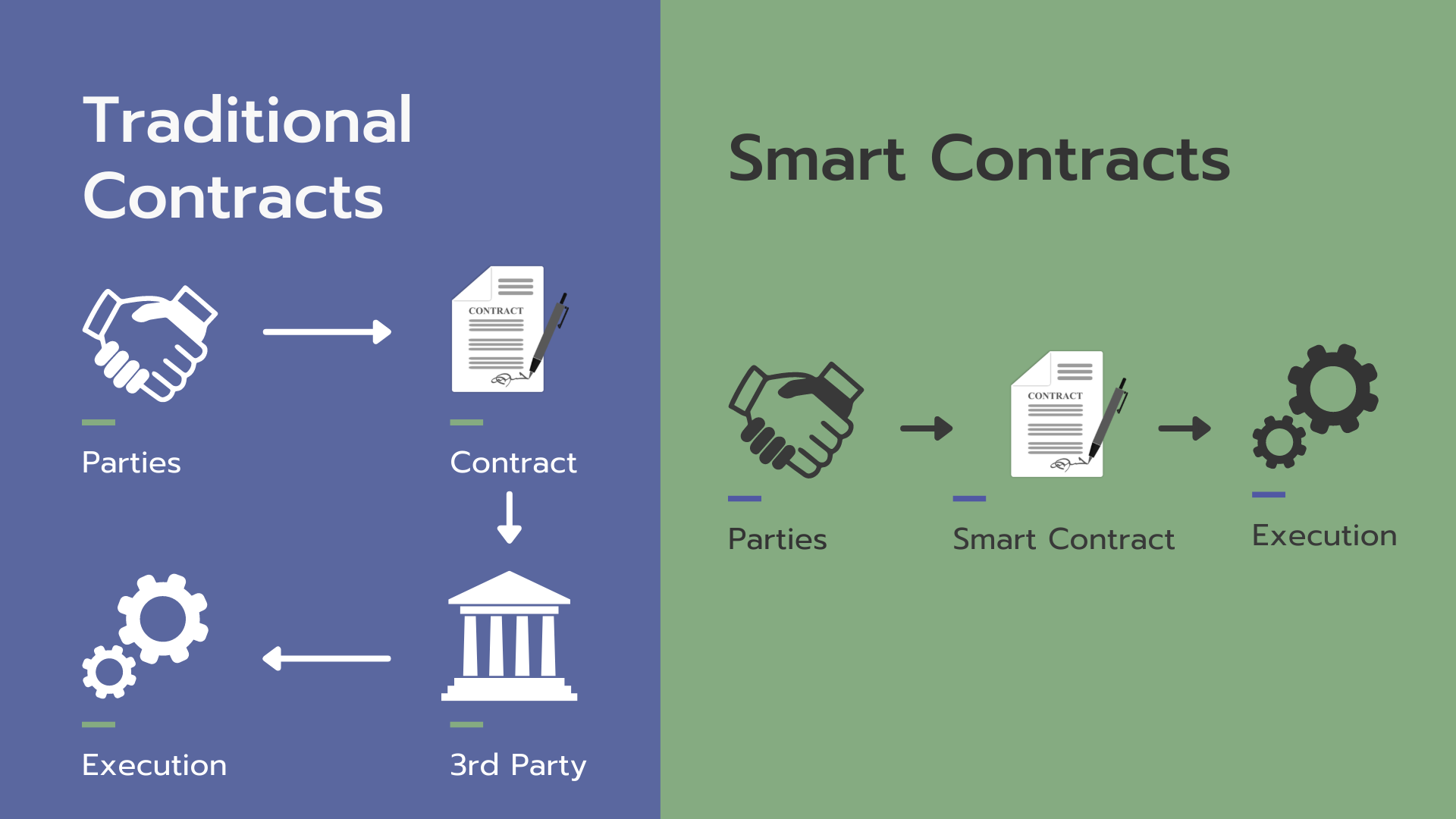Ethereum: Decentralized Blockchain Platform & Use Cases
Salomon Kisters
May 3, 2021This post may contain affiliate links. If you use these links to buy something we may earn a commission. Thanks!
When Bitcoin was launched in 2009, it caught the interest of many people. One of which was Vitalik Buterin, a programmer who later co-founded Ethereum, with its crowdfunding done in 2014. This article takes a detailed look at Ethereum, its use cases, how to buy, and why you should opt for OriginStamp.
What is Ethereum?
Ethereum is a decentralized blockchain-based software that has smart contract functionality. Ethereum is open source and used primarily to support the second-largest cryptocurrency in the world known as Ether. Ethereum enables the smart contracts and applications built on its blockchain to run smoothly without fraud, downtime, control, or any third-party interference.
Ethereum is also a programming language that helps developers to create distributed applications. One of the major projects with Ethereum is Microsoft’s partnership with ConsenSys offering Ethereum Blockchain as a Service on Microsoft Azure to enable developers and enterprise clients to have a single click blockchain developer environment that is cloud-based.
Ethereum split into two different blockchains in 2016 namely Ethereum, and Ethereum Classic. This was due to a hack earlier that year in which the hacker made away with $50 million Ether. The hacker took advantage of a third-party project flaw and exploited a DOA (a smart contract set originating from the Ethereum platform).
Ethereum was already the second-largest digital currency in the market as of September 2019. Ethereum’s idea is to revamp the usage process of applications on the internet today. Today, many third-party intermediaries help us carry out the tasks we want to on the internet.
As a result, essential data such as users’ financial data of various applications are stored on servers controlled by these third parties. This implies that the third parties are in control of the data and can do anything with and to the data without the user’s consent. Furthermore, it poses a considerable risk towards hacker attacks.
How to make use of Ethereum
Blockchain is decentralized because its public ledger is not stored in a single place. The public ledger is stored on thousands of volunteer’s computers around the globe, each of which is called a node. The verification of the data stored on blockchain involves more than half of the nodes before being certified as correct. Cryptography is used to keep transactions on the blockchain network secure and to verify them also.
Computers are used to solve complex mathematical equations that help to confirm transactions on the network and input new blocks to the chain.
Ether, just like any other cryptocurrency, can be used in financial transactions as a digital currency. Ether also serves as a medium through which users can carry out any task on Ethereum.
Ethereum aims to provide a system that gives users more control over their data, and it also allows for applications to be built and run on the blockchain. To run these applications and have this level of control on the Ethereum platform, it requires Ether. The more the number of people making use of the platform, the higher the fees.
How to store Ether
To store Ether, a user requires an Ethereum wallet. Most of these wallets are digital and can be accessed via a laptop or smartphone. The Ethereum wallet stores the private key (secrets keys with which the user can access the Ether) of the user.
If a user loses their private key, they have lost their Ether, and there is nothing such as a help desk or customer care to contact to recover your private key.
There are various types of wallets.
Hardware wallets: These are electronic devices such as USB sticks that can be used to sign and send ether transactions without being online. They are detached from the internet, and they provide a higher level of security. It is not easy to hack, and it is most suitable to store a large amount of Ether. On the downside, hardware wallets can get lost just like any other key.
Desktop and Mobile wallets: Desktop wallets are wallets that run on a laptop or a PC, while Mobile wallets run on a smartphone. These wallets can be either custodial or non-custodial. Custodial wallets depend on third parties to keep a user’s private key safe. This, however, has its risks as these third parties can be hacked. Non-custodial wallets do not depend on third parties to safeguard their private keys. They are kept safe by the user.
Paper wallets: This option involves printing or writing down the private key on a slip of paper and keeping it safe somewhere. It is the most old-fashioned method of storage. The only thing about this is that you must remember where it is kept.
Web wallets: These are the least safe method of storage which involves storing the private keys online.
A wallet connected to the internet is called hot storage, while a wallet that is not connected to the internet is called cold storage. It is advisable to combine both the cold and hot storage wallets to get maximum security.
How to buy Ether
There are different ways to buy Ether.
Online Exchange platforms: This is usually the easiest method of buying cryptocurrencies. It involves a platform that buys and sells Ether for a fee. You can buy Ether from these platforms with fiat currency (dollar, Euro, pounds) with a bank transfer or a debit or credit card. The platforms conform to the Know-Your-Customer (KYC) laws, which means a user’s identity must be confirmed before the user can make transactions on the platform. An example of such a platform is Coinbase.
Trading platforms: These platforms connect sellers and buyers via an intermediary, and they can also trade a cryptocurrency for another one.
Peer-to-peer: This method involves the buyer contacting the seller directly and negotiating prices. There is no middle man involved in this process, and there are no fees paid. There are some cities such as Toronto and New York that have Ethereum meetups frequently. There are also sites such as LocalCryptos that help connect users who want to trade Ether peer-to-peer methods.
How Ethereum Works

Ethereum is not controlled by any third party or entity. Instead, they are controlled by codes. Several pieces come together to ensure that Ethereum is functioning accordingly.
Smart Contracts: The whole point of Ethereum having a system not controlled by a third party but by codes is induced by smart contracts. Smart contracts are automatically executed when certain stated conditions are met without the help of any external body. Smart contracts are involved in any cryptocurrency. They are not restricted to and can be used outside Ethereum, but they are popularly known for their Ethereum usage. Bitcoin also supports basic smart contracts, but its applications are limited when compared to Ethereum’s. Some developers and researchers have criticized smart contracts that these would open up possibilities for security vulnerabilities.
Ethereum Blockchain: This is where the history of all the smart contracts executed are stored. Hundreds of nodes from all over the world store a copy of the entire blockchain. Thousands of computers process a smart contract whenever it is executed to ensure that all the stated rules were adhered to. The nodes do not only store transaction details. Also stored in a node are accounts, smart contract code, smart contract state. All the nodes follow the same rule set for verifying a transaction, and they are all connected.
Ethereum Virtual Machine (EVM): The Ethereum virtual machine executes the smart contracts. It helps translate the smart contract written in a language computer that can’t read to a language (bytecode) that they can read. The EVM can execute at least 140 different codes with specific tasks.
Ether: As already stated, Ether is Ethereum’s native cryptocurrency. Ether is stored in accounts, and there are two types of accounts. Externally owned accounts are used to hold and send Ether by users, and Contract accounts are the accounts that hold smart contracts.
Proof-of-Work: When a block of a transaction is created, miners, in an attempt to get the correct value of the block, generate values until they get it. A hash value is then sent across the network for the nodes to verify when the miner finds it. If it is validated, the miner receives the Ether it unlocked when it discovered the hash. There is, however, a plan to switch to a new algorithm called proof-of-stake, which is tipped to consume less computing power and electricity than proof-of-work.
Ethereum Use Cases
Here is a short video covering Decentralized Finance:
Decentralized Finance (Defi): Decentralized finance is a term used to refer to financial services and products that are available and accessible to anyone that can make use of Ethereum. No authority can deny access to anything for a user or block payments, and markets are always open with Defi. Anyone can inspect the codes, and there are no longer risks of human errors as the services are now automatic and governed by code. With traditional finance, some problems that exist include
- Denial of an individual from making use of financial services
- Financial services can prevent an individual from getting paid.
- Limitation of trading hours to specific time zones trading hours
- Centralized institutions and governments can shut down the markets at will.
In the Defi system, the user holds and has total control over their own money, transfer of funds takes just a few minutes, it is open to anyone, and the market is always open. A user can also send money anywhere in the world, access stable currencies, borrow funds with or without collateral, trade tokes, buy insurance, and much more.
Non-Fungible Tokens (NFTs): NFTs are tokens that can be attached to unique items, and they are not interchangeable for any other item. They allow value to be given to art, music, etc., in terms of digital currency. They are secured on the Ethereum blockchain and can have only one owner at a time. A new NFT cannot be copied and pasted into existence, and no two can be the same. They are compatible with anything that is built on the Ethereum platform. NFTs can be sold anywhere, and the owners have access to the global market.
Decentralized autonomous organizations (DAOs): DAOs are owned and governed collectively by their members, and they function based on smart contracts. They are internet-based, and they have in-built treasuries that cannot be accessed without being granted permission by the group. They make decisions by proposals and voting to ensure that everyone in the group can air their opinions. There is no CEO or CFO, and the rules that govern their spending are part of the DAO code. The codes and all their activities are transparent, and they operate a democratic system. The votes which are tallied automatically are required before any change can be implemented. Examples of DAOs are charity organizations, ventures, freelancer networks, etc.
How OriginStamp uses the Ethereum blockchain
Like other blockchains, Ethereum is an append-only ledger, and any data stored inside it is secured against manipulation. OriginStamp uses the Ethereum blockchain as one of the blockchains to create tamper-proof, blockchain-based timestamps. OriginStamp timestamps can then be used to prove that a document or digital asset existed at a specific time and wasn’t changed since. The latest Event API from OriginStamp also uses Ethereum to create transparent not alterable Event chains.
Conclusion
Just behind Bitcoin, Ethereum is a growing platform also. As of April 2021, it is the second-largest blockchain in the world. In the next few years, Ethereum might become larger than Bitcoin and be adopted for use by large organizations like Google and Facebook. This is mostly due to its wider range of application
Stay informed with the latest insights in Crypto, Blockchain, and Cyber-Security! Subscribe to our newsletter now to receive exclusive updates, expert analyses, and current developments directly to your inbox. Don't miss the opportunity to expand your knowledge and stay up-to-date.
Love what you're reading? Subscribe for top stories in Crypto, Blockchain, and Cyber-Security. Stay informed with exclusive updates.
Please note that the Content may have been generated with the Help of AI. The editorial content of OriginStamp AG does not constitute a recommendation for investment or purchase advice. In principle, an investment can also lead to a total loss. Therefore, please seek advice before making an investment decision.

Digital Signatures: The Digital Equivalent of Signing a Paper
Learn about digital signatures, the digital equivalent of signing a paper or putting a thumb impression, used for authenticity and security in the digital world.

Protect Your Ideas Using Blockchain Technology: A Comprehensive Guide
A Comprehensive Guide - Learn how to safeguard your intellectual property with blockchain technology to prevent theft and secure ownership.

Top 8 Blockchain Applications for Documents You Need to Know
Blockchain is not just cryptocurrency! Get an overview of the Top 8 Blockchain Applications that use blockchain for storing, securing, and sharing documents.
Protect your documents
Your gateway to unforgeable data. Imprint the authenticity of your information with our blockchain timestamp